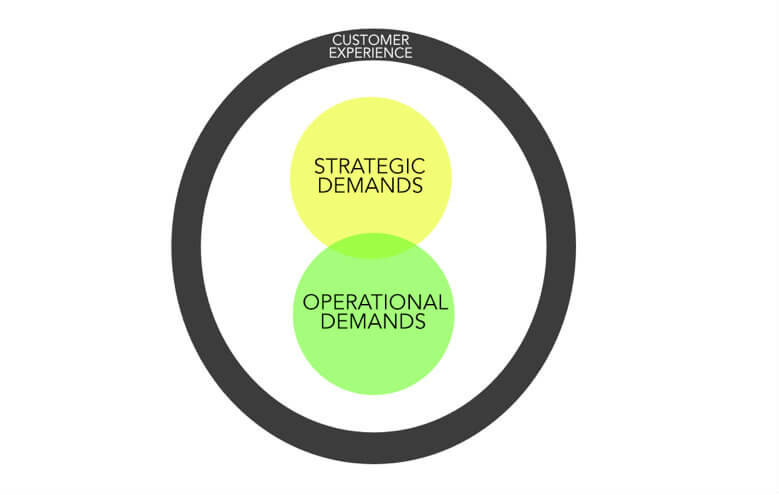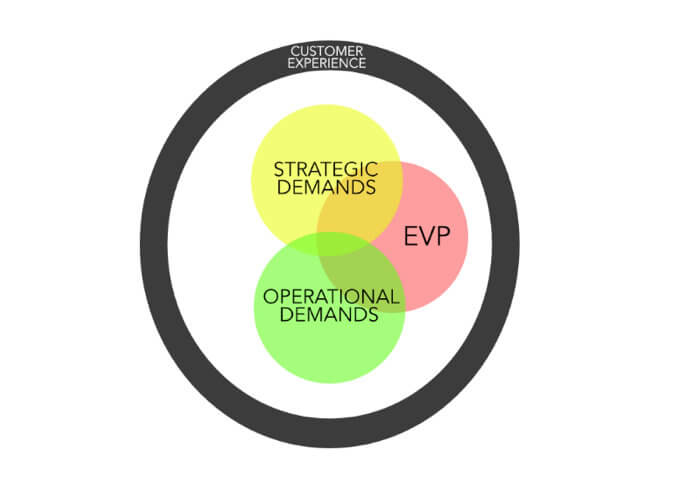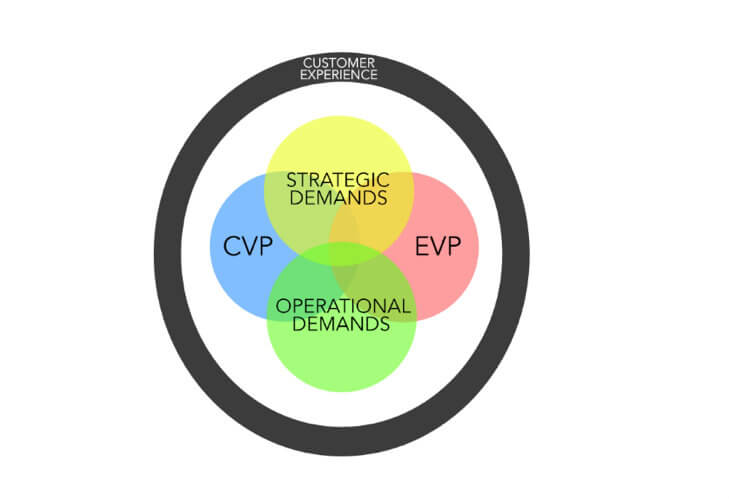Industry, customer base, product and services, – these are all things that differ in terms and context dependent on who an organization is and what it does, but whether the discussion is centered on a multi-national corporation, a mom-and-pop-shop or a university, they are all factors that the leaders within those organizations strive to define, manage and benchmark against. They are the tangibles that make up the what and how of a business, their why typically takes shape in the guise of a mission, vision or call to action, but the factor that often gets ignored to the detriment of an organization’s best efforts to be the best version of itself, and an important component of any organizational equation is who.
WHY + WHAT + HOW + WHO = X
While it is possible to operate— and even garner success – relying on the first three parts of the equation, an organization that’s not able to articulate and shape who they are is one that’s journeying down a bumpy road, if for no other reason than the fact that stakeholders, employees and competitors will happily begin to define your who for you in the absence of a guiding hand. Which all leads us back to the question “Who?” Who is defined at its most basic as your organization’s culture, at its most complex as an employment value proposition – it is the defining characteristics, benefits, nuances, and tenets of an organization that shape the employee experience which in turn shapes the customer experience.
I’ve spent most of the last 15 years working in the public sector and higher education – in higher education, who is something that is often clearly defined and communicated in regards to the student experience (customer experience for those in other operating arenas) – being able to explain who they are is critical in any campus’ student recruitment and retention efforts, it is the bread and butter of enrollment and admissions; to paraphrase a former higher education HR colleague, “We should measure the cost of everything we do in terms of student credit hours,” essentially breaking down the measure for success as a factor of customer experience ROI.
Continuing the example, credit hours are the result of successes on the student recruitment and retention front, they are what keep the lights on and in turn serving our students is the underlying foundation of everything one does when they work at a university whether that’s being part of the HR team or serving in an instructional capacity in the classroom – the student experience is an undeniably critical component of the foundation of any university’s strategic goals and operational demands.

What isn’t always clearly defined in higher education institutions – or in many organizations across many industries for that matter – is the who of the employee experience, in many organizations the definition of the work culture is often an offshoot of the customer experience and in many ways this isn’t necessarily a bad thing, but unfortunately it doesn’t address all the components of who that are critical to recruiting, retaining, and developing employees to foster the mission and push forward on strategic initiatives and operational efficiencies that are inherently linked to the success of any organization in an ever more competitive global work space.
CULTURE + SCOPE OF WORK + COMPENSATION + CAREER DEVELOPMENT + BENEFITS
= WHO
Defining who in terms of the employee experience allows an organization to communicate what they stand for, what sets them apart, why someone would affiliate with them, why someone would maintain that affiliation, and what are the perks both tangible and intangible of that affiliation through the lens of its role as an employer, and whether it defines itself as an employer of choice – it involves creating the bridge between the employee experience and the employment value proposition.

While the components of who are simple enough, defining them can be challenging in light of internal politics, benchmarking against comparator institutions, budgetary conflicts and restraints, internal aversion or acceptance of change, and a laundry list of other factors that can weigh heavily on the idea of who as a consensus notion.
Establishing who an organization is takes dialogue and introspection, it takes managerial courage to identify the gaps of how the organization is perceived as an employer and what kind of employer it really wants to be, it requires asking some very important questions:
- Who are we as an institution? Is that how we wish to be seen? What are our values? Our mission?
- Who are our comparators? Who do we compete with for talent? Are our comparators solely in our industry? Why are our comparators our comparators?
- What is it that we do that’s better or different than our comparators? How does this give our organization an advantage? Are we currently taking advantage of our advantages? If not, why not?
- Why are these advantages important? Why do they matter? How do they align with our values and mission?
- What mix of professionals are critical to our success? Are we staged for success? Where are our workforce gaps? Are the gaps real or perceived? What are the barriers to defining who we are (and who we want to be) as an employer of choice?
The path to understanding your who can be a challenging one, it will require partnerships and leveraging organizational relationships, it is a process that will call on HR to secure organizational buy-in from a whole contingent of institutional leaders who may have wide varying perspectives and takes on the previously outlined questions – in short, it won’t be a short process. But when your organization engages with employees and leaders throughout the institution to understand the multitude of ways internal stakeholders feel about the questions HR is asking, the results can redefine an HR function on a wide array of fronts ranging from talent acquisition to compensation to benefits to professional development to internal communications and on and on.
Developing an employment value proposition that is stewarded and curated allows HR to foster the employee experience and focus on and contribute to the strategic and operational demands of the organization and not find itself sandboxed into purely tactical and transactional work that still lingers many years after the personnel department became the human resources department, and it sets the foundation to begin engaging current employees as well as prospective ones as to how the institution can be a critical part of meeting their needs, wants, as well as their personal career value propositions – that mix of what they offer as an employee, how they can positively contribute to the operational and strategic demands of your organization, what they want out of a career opportunity, and how they define themselves in relation to what they do professionally.

Photo Credit: amsfrank Flickr via Compfight cc
Post Views: 2,394